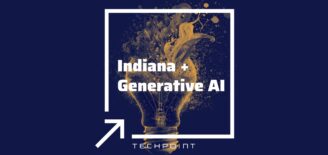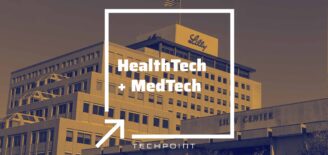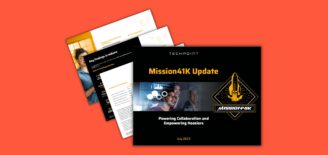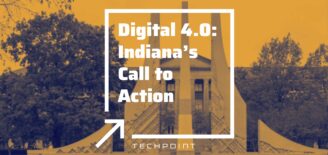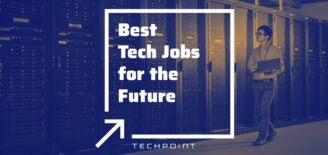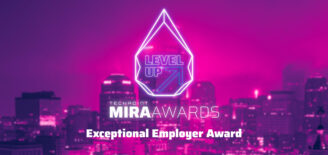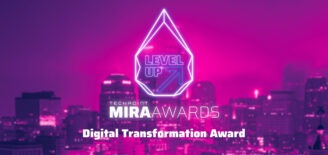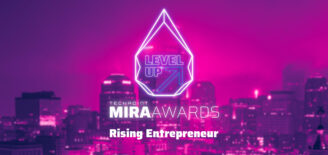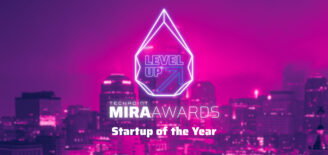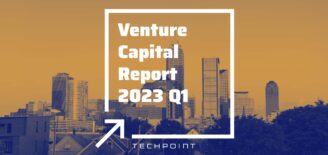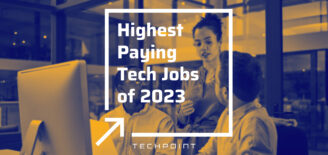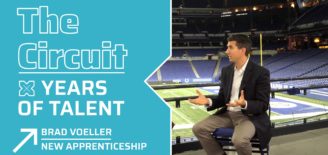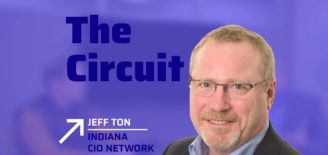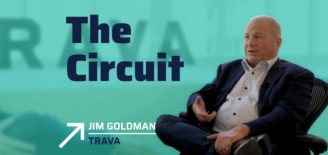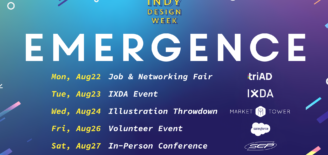Struggling to hire top tech talent? Modernize your employee benefits
Today’s fast changing market requires an agile approach to employee benefits. But have you reviewed your total rewards package lately? Over time, your organization’s people strategy, as well as your current and future workforce have likely evolved. You might still be investing in benefits and programs that are no longer valuable to your employees, or perhaps never were valued considering the differing priorities of Millennials and Gen Z.
Given their ever-changing needs and expectations—particularly with how much has changed in the past few years—you might not have the right total rewards offerings for your employees and your organization.
In a confusing twist of fate, some companies are choosing to layoff employees and find ways to cut costs. This is due to the technology industry experiencing a unique labor market within the overall economy, as they face the tension between a hyper competitive talent market and the reality of a potential economic downturn. In Indiana, the numbers tell the story—as the state currently has a 7.3% job openings rate with only a 2.2% unemployment rate.[1] However, broader external market factors including inflation, rising interest rates and recession fears have caused a wave of tech companies that were aggressively hiring to announce layoffs in recent weeks.[2]
In light of these curious and somewhat contradictory market conditions, where should you focus now? Here are three key total rewards trends to consider for your company.
Employee Compensation Trends
The pandemic has made flexible and remote work arrangements more realistic quicker than most of us ever dreamed possible. But, as we consider a more holistic strategy around remote work, you may be asking, “How do I pay a distributed workforce? How should I approach my employee compensation strategy?”
Take a close look at your compensation philosophy and practices around geographic and remote work pay, and create a flexible, future-focused strategy. Here are three key approaches to determining pay for your distributed workforce:
- By employer location or national rate – employees are paid on a single pay structure regardless of where they live.
- By employee location – employees are paid based on where they live.
- Remote work differential – employees are paid using a differential above your “home office” rate for working remotely by choice. For example, if you would normally pay $45,000 for a marketing coordinator, you may add a 5% remote work differential to increase their pay to $47,250. This accounts for the office costs (such as desk space, snacks, printing costs) that you are saving when they chose to work remotely.
Beyond base pay, companies are enhancing their incentive programs to become more competitive and to increase retention, especially when employees are receiving high offers from competitors in other geographic markets where they can work remotely full time.
- Short-term incentive programs: Are there ways you can enhance your short-term (e.g., annual) incentive programs? Eligibility for short term incentive programs has steadily increased over the years, and now nearly 91% of all employees receive some sort of variable pay.[3] Increasing eligibility to additional groups can make your total compensation package more attractive and competitive, as long as the opportunity is clearly communicated and understood. Furthermore, giving creative options for investing short-term bonus dollars can set you apart from the competition. Finally, consider accelerating the payouts to at least a semi-annual or quarterly basis so the employees receive the value more frequently than once a year.
- Long-term incentive programs: Using non-qualified deferred compensation programs with reasonable vesting periods (3-4 years is most common) for employer contributions can tie employees to the long-term strategy of your company and be a “golden handcuff” for retention purposes.
Finally, while communication is always critical to success, it’s especially important in compensation. Employees will develop their own opinions if you don’t communicate with them directly about pay. In a world where it’s easier for employees to gather salary information online (for better or worse), being clear and transparent about your compensation program, including how you review and determine pay rates and market competitiveness, can give your employees the confidence they need to know that they will be treated fairly and equitably.
Creating a More Inclusive Workforce
Not only do diverse and inclusive teams have better business outcomes, expanding your talent pool and total rewards package to better support underrepresented populations can help fill open positions and gaps in your succession plan. “Degree inflation” is when jobs require a degree (often a four year college degree) as a baseline qualifying credential for a job interview, but it is actually not needed for the job. To create more equitable and inclusive workforces, employers are turning to more skill based hiring and programs such as apprenticeships and externships to fill staffing needs. At the same time, this approach is most successful when paired with robust talent development programs, such as learning and development opportunities, mentoring and coaching. These pathways can not only bolster success with new hires, but continue employee development throughout their career journey.
Employee Benefits Trends
Mental Well-Being Focus
Employers are strategically expanding their well-being strategies to include an emphasis on mental well-being. With one in every five U.S. adults having a mental health disorder, mental health is an issue we cannot ignore. And, we know even more employees are struggling with everyday mental health concerns that may go untreated. Close to half of all Americans with mental illness are not getting treatment, according to the Mental Illness Policy Org.
Now is the time to assess your current resources, select any additional programs for your benefits package, and ensure your employees understand what benefits are available and how to use them. Consider these steps as you start or further develop your mental well-being strategy:
- Start with meaningful data so you can get clear on your challenges.
- Identify or review your well-being strategy; assess and select resources and create organizational support.
- Educate and engage employees.
Recruiting and Retaining Your Executive Teams
With the great resignation sparing very few, business leaders are evaluating the ways in which they recruit and retain executive leaders. Often there are gaps left by traditional life and disability benefits that would leave a valued executive with subpar coverage if something were to happen to them. There is a need to equalize and restore these shortfalls to help mitigate the cost and strain of replacing key employees. Considering additional ways for them to save for retirement beyond your group retirement plan is at the top of this list as well!
Employee Lifestyle Perks
This topic can fall into many and all of the above categories. The types of things that fall in here may include lifestyle spending accounts, child and eldercare support programs, loan payment support programs, and even pet insurance! It can be overwhelming to think of what all could be a perk, but narrowing down your focus to what would be meaningful to your population could create wins for your teams. And offering access to it gets you points in recruiting and retention, even if it’s not a payroll deduction option. Making the connection counts.
Workplace Culture and Connection
Even the best total rewards package can’t make up for a toxic culture. Focusing on your people, providing the opportunities to connect, collaborate and build relationships, whether in person or virtually, are critical. Not only will this build connection with your organization, but it will also support mental health and employee retention.
These three focus areas in total rewards all share one thing in common: It’s important to have leadership and manager support to truly see success. You also must communicate early and often with employees in all of these areas so they understand the true value of your offerings and have a positive and engaging employee experience. With the right pieces of your total rewards package, you can attract and retain high performing talent to drive your organization’s performance to the next level.
[1] Source: SHRM compilation of the Bureau of Labor Statistics Data
[2] Source: CNN Business article July 7, 2022
[3] Willis Towers Watson 2020 U.S. Annual Incentive Plan Design Survey



